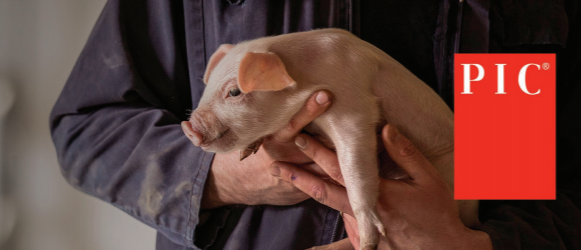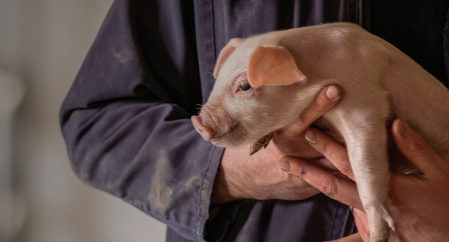



Improving sow retention rates: 8 strategies to implement in your barn
Improving sow retention through genetic selection is one part of the solution, but environmental factors have a large impact on sow retention rates too. Use these eight strategies in your barn to make improvements in sow retention.Part of Series:
< Previous Article in Series Next Article in Series >

1. Train and re-train staff on gilt selection
At the top of the genetic pyramid, (elite farms, production nucleus and daughter nucleus), the belief is only high-quality pure line gilts should enter the production system. Using pure line gilts with poor leg structure or compromised feet integrity hinders genetic merit.
Farms that take the necessary steps to train and certify staff in charge of selecting the gilts tend to have better results. The selection officer’s job, to select the system’s replacements, is crucial. Farms that focus on correct and consistent gilt selection have a lower sow mortality than farms that are not as critical during selection.
Selecting only high-quality gilts is essential for both multiplier units and commercial farms. This starts with the management/owner’s support. Implementing change can lead to mid- and long-term improvements and some short-term challenges. For example, not meeting breed targets in the short term. Managers and owners need to support barn staff through these challenges to maintain the consistency of the program.
2. Train gilts for electronic sow feeding
Feed intake during electronic sow feeding (ESF) training can affect age/weight at puberty, gilt utilisation rate (bred gilts divided by entered gilts x 100) and future retention rate. Farms that track the individual daily feed intake can identify high-risk individuals or groups.
Staff education and awareness of the unique responses experienced with ESF training will help work through this period. Staffing adequately for training is the key to success. To deliver consistent, positive results during a three- week training, a dedicated employee is needed for 7 days a week for the first week, and then 2 hours per day in weeks 2 and 3.
3. Know gilt body weight at first breeding
Gilt body weight is a major player in sow retention rate due to its impact on sow mortality, especially in parity 0, parity 1 and parity 2 sows.
The optimum body weight for first breeding is 300-350 lbs (135-160kg). Most farms visually estimate weight, and most consistently underestimate. For the most accurate estimation, use a flank-to-flank tape. Farms using a flank- to-flank tape to estimate the individual body weight and modify the breeding time accordingly, increase the likelihood that gilts are within the optimum body weight at first breeding.
When a farm breeds gilts that are too heavy (i.e. above 350 lbs/160 kg), they risk a higher lameness rate, especially in facilities with abrasive, slippery or poorly drained floors. Heavier weights and poor floor quality can be compounded by aggression when mixing animals together.
If you do breed heavy gilts, flag and closely monitor them through gestation and subsequent farrowing. With early identification, you can adjust management strategies like daily feed allowance and watch for potential farrowing difficulty. In addition, focusing on lactation feed intake may lead to increased retention.
4. Have a body condition scoring programme that works
Sows are commonly body condition scored based on subjective evaluation, resulting in inaccurate feeding levels during gestation. Producers with lower sow mortality rates understand body condition is relevant. They strive for a more consistent body condition score across different farms and within the same farm, and typically use an objective scoring system such as calipers to adjust the daily feed allowance. The execution is simple, and the implementation is straight forward, so it can be easily applied across various team members on the farm. Body condition scoring should be performed at breeding, by week 4 and then at 60 days. (A few producers score again at 90 days).
5. Rapid response when a sow is falling out
Through training and development, individual animal identification and care are instilled in the company culture. It starts by recognising injured sows and knowing a sow losing body weight in gestation needs help.
Staff should be trained, know what to do and have the resources to take immediate action. Identify a clean, dry and non-slippery individual space where sows rest and feel truly protected. The sow should have access to feed and water to recover body reserves. Watch for common challenges that may come up. For example, elevated body temperature after farrowing or checking placenta expulsion to identify sows early and treat appropriately.
6. Make sure gilts eat and drink in farrowing
Water consumption in lactation is the main contributor to success or failure during lactation. Twelve to eighteen hours after being placed in farrowing, 10-15 percent of sows do not drink. These are mostly gilts. To ensure each gilt and sow are drinking, check waterers. Nipple waterers should deliver 0.5 gallon per minute and be easy for the sow to access. Make sure sows can stand and have used the nipple waterer.
If they haven’t, spend time teaching them how. Some producers have modified their equipment to avoid the switch from water bowls/cups in gestation to nipple waters in farrowing. Results on those changes are not yet known.
7. Monitor the farrowing process
Farrowing monitoring is an important part of improving the health of the sow and her piglets. By providing obstetric assistance if needed, and checking and recording placenta expulsion, we can quickly and accurately identify sows that need additional focus. If a placenta is not found or is not recorded, a farrowing technician should check the sow. Complete manual palpation to check for pigs in the birth canal or for retained pigs.
8. Have culling protocols
Farms consistently achieving breeding targets are in the perfect place to consider elevating the quality of sows they keep. Before weaning, sows with poor performance, chronic reproductive issues, old age or structural/underline issues are identified and placed in a designated cull area. Culling is strategically linked to a consistent heat-no-service program and gilt flow. Thus, GDU management must deliver the right amount of high- quality gilts for the farm to be able to confidently cull sows prone to have a reproductive failure and/or reduced expectation of herd life.
For more information, read the other articles in the Improving Sow Retention series or contact your PIC team today.
• Improving Sow Retention Rates: Focus on Maternal Robustness and Longevity
• Improving Sow Retention Rates: A Case Study










